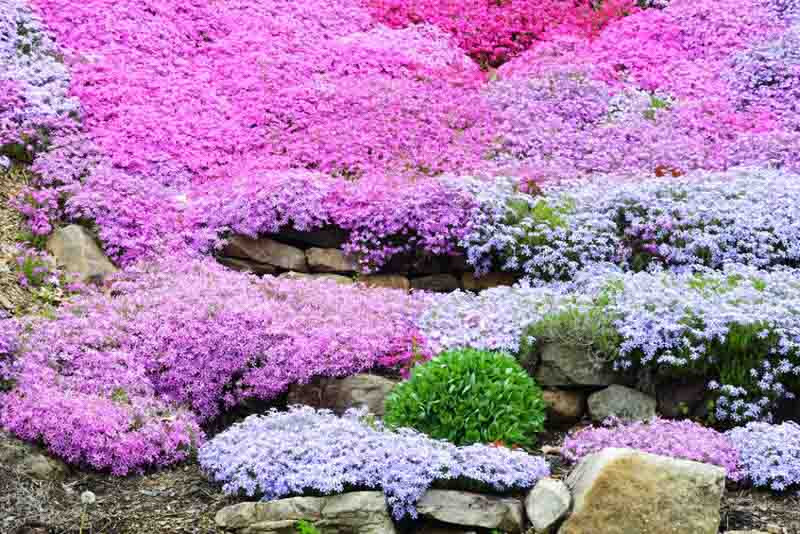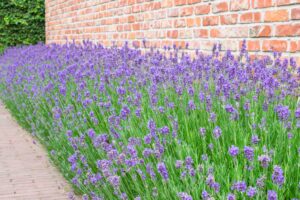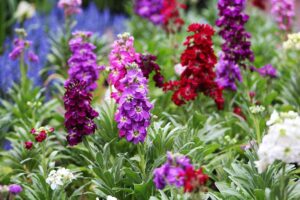Creeping Phlox: The Perfect Companion Plants
Creeping phlox is a low-maintenance, drought-tolerant perennial that adds a touch of color to any garden. It’s also a great choice for pollinators, as its flowers attract bees, butterflies, and hummingbirds. But what plants make the best companions for creeping phlox?
In this article, we’ll share our top picks for companion plants for creeping phlox. We’ll also discuss the benefits of companion planting and how to choose the right plants for your garden.

So whether you’re just starting a garden or you’re looking to add some new plants to your existing space, read on for our expert advice on companion planting for creeping phlox!
Companion Plants for Creeping Phlox
Creeping phlox (Phlox stolonifera) is a low-growing, spreading perennial that blooms in late spring and early summer. It’s a popular choice for gardens because it’s easy to care for and attracts pollinators. However, creeping phlox can be a bit aggressive, so it’s important to choose companion plants that won’t be crowded out.
Here are a few of our top picks for companion plants for creeping phlox:
- Astilbe: Astilbe is a herbaceous perennial that blooms in early summer. It’s a great companion plant for creeping phlox because it has similar light and soil requirements. Astilbe also helps to add structure to the garden and provides a nice contrast to the creeping phlox’s delicate blooms.
- Brunnera: Brunnera is a herbaceous perennial that blooms in early spring. It’s a great companion plant for creeping phlox because it has similar light and soil requirements. Brunnera also helps to fill in the spaces between creeping phlox plants and provides a nice backdrop for their blooms.
- Hosta: Hostas are a popular choice for shade gardens. They’re a great companion plant for creeping phlox because they have similar light and soil requirements. Hostas also help to add structure to the garden and provide a nice contrast to the creeping phlox’s delicate blooms.
Table of Companion Plants for Creeping Phlox
| Companion Plant | Light Requirements | Soil Requirements |
|---|---|---|
| Astilbe | Partial to full shade | Moist, well-drained soil |
| Brunnera | Partial to full shade | Moist, well-drained soil |
| Hosta | Partial to full shade | Moist, well-drained soil |
| Iris | Full sun to partial shade | Moist, well-drained soil |
| Lamium | Full sun to partial shade | Moist, well-drained soil |
| Pulmonaria | Partial to full shade | Moist, well-drained soil |
| Vinca | Full sun to partial shade | Moist, well-drained soil |
Tips for Choosing Companion Plants for Creeping Phlox
When choosing companion plants for creeping phlox, it’s important to consider the following factors:
- Light requirements: Creeping phlox prefers partial to full shade. Make sure to choose companion plants that have similar light requirements.
- Soil requirements: Creeping phlox prefers moist, well-drained soil. Make sure to choose companion plants that have similar soil requirements.
- Growth habit: Creeping phlox is a low-growing, spreading perennial. Make sure to choose companion plants that won’t be crowded out by the creeping phlox.
- Bloom time: Creeping phlox blooms in late spring and early summer. Make sure to choose companion plants that bloom at different times of the year to extend the bloom time in your garden.
The Best Companion Plants for Creeping Phlox
The Best Companion Plants for Creeping Phlox
Creeping phlox (Phlox stolonifera) is a low-growing, spreading perennial that is native to North America. It is a popular garden plant because of its showy flowers, which come in a variety of colors, including white, pink, purple, and blue. Creeping phlox is also a relatively easy plant to grow, and it is tolerant of a wide range of conditions.
One of the best things about creeping phlox is that it is a great companion plant for other flowers. It can be used to fill in gaps in a flower bed, or it can be planted in combination with other plants to create a more visually appealing display.
Here are some of the best companion plants for creeping phlox:
- Daylilies. Daylilies are a good choice for companion plants for creeping phlox because they bloom at the same time of year. They also have similar water and soil requirements.
- Shasta daisies. Shasta daisies are another good choice for companion plants for creeping phlox. They bloom at the same time of year, and they also have similar water and soil requirements.
- Yarrow. Yarrow is a good choice for companion plants for creeping phlox because it blooms at the same time of year, and it also helps to deter pests.
- Coneflowers. Coneflowers are a good choice for companion plants for creeping phlox because they bloom at the same time of year, and they also help to attract pollinators.
- Lavender. Lavender is a good choice for companion plants for creeping phlox because it blooms at the same time of year, and it also helps to repel pests.
When choosing companion plants for creeping phlox, it is important to consider the size, shape, and color of the plants. You also want to make sure that the plants have similar water and soil requirements. By choosing the right companion plants, you can create a beautiful and thriving garden.
Table of Companion Plants for Creeping Phlox
| Companion Plant | Bloom Time | Water Requirements | Soil Requirements | Pest Control |
|---|---|---|---|---|
| Daylilies | Late spring to early summer | Medium | Well-drained | None |
| Shasta daisies | Late spring to early summer | Medium | Well-drained | None |
| Yarrow | Late spring to early summer | Low | Well-drained | Deters pests |
| Coneflowers | Late summer to early fall | Medium | Well-drained | Attracts pollinators |
| Lavender | Late summer to early fall | Low | Well-drained | Deters pests |
When choosing companion plants for creeping phlox, there are a few things to keep in mind.
- Sunlight: Creeping phlox is a sun-loving plant, so it’s important to choose companion plants that will tolerate full sun. Some good options include daylilies, coneflowers, and black-eyed Susans.
- Water: Creeping phlox is a drought-tolerant plant, but it will benefit from regular watering during dry spells. Some good companion plants for creeping phlox include hostas, ferns, and sedums.
- Soil: Creeping phlox prefers well-drained soil, so it’s important to choose companion plants that will not compete for water and nutrients. Some good options include yarrow, astilbe, and sedges.
- Size: Creeping phlox is a low-growing plant, so it’s important to choose companion plants that will not overshadow it. Some good options include dwarf sunflowers, ornamental grasses, and creeping thyme.
Here is a table summarizing some of the best companion plants for creeping phlox:
| Companion Plant | Sunlight Requirements | Water Requirements | Soil Requirements | Size |
|---|---|---|---|---|
| Daylilies | Full sun | Regular watering | Well-drained soil | Medium |
| Coneflowers | Full sun | Regular watering | Well-drained soil | Tall |
| Black-eyed Susans | Full sun | Regular watering | Well-drained soil | Medium |
| Hostas | Partial to full shade | Regular watering | Moist, well-drained soil | Large |
| Ferns | Partial to full shade | Regular watering | Moist, well-drained soil | Medium to large |
| Sedums | Full sun to partial shade | Drought tolerant | Well-drained soil | Low-growing |
| Yarrow | Full sun to partial shade | Drought tolerant | Well-drained soil | Medium |
| Astilbe | Partial to full shade | Regular watering | Moist, well-drained soil | Medium to tall |
| Sedges | Full sun to partial shade | Drought tolerant | Well-drained soil | Low-growing |
Creeping phlox is a beautiful and versatile perennial that can be used in a variety of garden settings. It is also a great choice for companion planting, as it can help to attract pollinators, deter pests, and improve the overall health of your garden.
Here are a few tips for planting companion plants with creeping phlox:
- Choose plants with similar growing conditions. Creeping phlox prefers full sun and well-drained soil. When choosing companion plants, make sure that they have similar light and moisture requirements.
- Plant companion plants that will attract pollinators. Creeping phlox is a magnet for bees, butterflies, and other pollinators. Consider planting some flowers that will attract these beneficial insects to your garden.
- Plant companion plants that will deter pests. Some plants, such as marigolds and nasturtiums, can help to deter pests from your garden. Consider planting these plants near your creeping phlox to help keep it healthy.
- Plant companion plants that will improve the soil. Some plants, such as clover and comfrey, can help to improve the soil quality in your garden. Consider planting these plants near your creeping phlox to help it thrive.
Here is a list of some companion plants that are well-suited for creeping phlox:
- Bee balm
- Coneflower
- Daylily
- Lavender
- Marigold
- Nasturtium
- Petunia
- Sage
- Yarrow
By planting companion plants with creeping phlox, you can help to create a beautiful and healthy garden that is full of life.
Caring for Companion Plants with Creeping Phlox
Caring for Companion Plants with Creeping Phlox
Creeping phlox is a low-maintenance perennial that is easy to grow and care for. However, there are a few things you can do to help your creeping phlox thrive, including:
- Watering: Creeping phlox does not require a lot of water, but it is important to water it regularly during dry spells. The best way to determine if your creeping phlox needs water is to stick your finger into the soil. If the soil is dry to the touch, it is time to water.
- Fertilizing: Creeping phlox does not require a lot of fertilizer, but it will benefit from a light application of fertilizer in the spring and fall. You can use a balanced fertilizer, such as 10-10-10, or a fertilizer specifically formulated for perennials.
- Pruning: Creeping phlox does not require much pruning, but you can remove any dead or damaged stems in the spring. You can also prune creeping phlox to keep it in shape.
Companion Plants for Creeping Phlox
Creeping phlox is a versatile plant that can be paired with a variety of other plants. Some good companion plants for creeping phlox include:
- Astilbe: Astilbe is a shade-loving perennial that blooms in the summer. It adds a touch of delicate beauty to any garden.
- Brunnera: Brunnera is a low-growing perennial that blooms in the spring. It has beautiful blue flowers and heart-shaped leaves.
- Hosta: Hostas are shade-loving perennials that come in a variety of colors and leaf shapes. They are a great choice for adding interest to any garden.
- Lamium: Lamium is a low-growing perennial that blooms in the spring and summer. It has beautiful purple flowers and green leaves.
- Sedums: Sedums are drought-tolerant succulents that come in a variety of colors and shapes. They are a great choice for adding texture and interest to any garden.
By following these tips, you can help your creeping phlox thrive and enjoy its beautiful blooms for years to come.
Troubleshooting Companion Planting with Creeping Phlox
Troubleshooting Companion Planting with Creeping Phlox
Creeping phlox is a low-maintenance, drought-tolerant perennial that is a popular choice for gardens in many parts of the country. It is also a good candidate for companion planting, as it can help to deter pests, improve soil quality, and attract pollinators. However, there are a few things to keep in mind when companion planting with creeping phlox.
- Avoid planting creeping phlox with plants that have similar water needs. Creeping phlox is drought-tolerant, so it can easily outcompete plants that require more water. If you want to plant creeping phlox with another drought-tolerant plant, make sure that they have similar water needs.
- Avoid planting creeping phlox with plants that have different soil pH requirements. Creeping phlox prefers slightly acidic soil, so it is best to avoid planting it with plants that prefer alkaline soil.
- Avoid planting creeping phlox with plants that are susceptible to the same pests and diseases.
Creeping phlox is susceptible to a number of pests and diseases, including aphids, powdery mildew, and leaf spot.. If you want to plant creeping phlox with another plant that is susceptible to these pests and diseases, make sure that you take steps to protect both plants.
Here are some tips for troubleshooting companion planting with creeping phlox:
- If you notice that your creeping phlox is wilting, it may be because it is not getting enough water. Try watering it more frequently and see if that helps.
- If you notice that your creeping phlox is getting yellow leaves, it may be because it is not getting enough nutrients. Try adding a fertilizer to your soil and see if that helps.
- If you notice that your creeping phlox is being attacked by pests or diseases, try spraying it with a neem oil solution or a horticultural oil.
By following these tips, you can help to troubleshoot any problems you may have with companion planting with creeping phlox.
Resources
1. The Spruce
This article from The Spruce provides a comprehensive list of companion plants for creeping phlox, including information on each plant’s size, growth requirements, and benefits for creeping phlox. The article also includes tips on how to plant and care for creeping phlox and its companions.
This article from Gardening Know How provides a list of companion plants for creeping phlox, as well as tips on how to choose the right plants for your garden. The article also includes information on how to plant and care for creeping phlox and its companions.
In Conclusion
Outro
Creeping phlox is a versatile plant that can be used in a variety of garden settings. By choosing the right companion plants, you can create a beautiful and harmonious landscape that will attract pollinators and butterflies.
Here are a few tips for choosing companion plants for creeping phlox:
- Consider the size, shape, and color of the plants.
- Choose plants that will complement the creeping phlox’s bloom time.
- Plant companion plants that will help to improve the soil and deter pests.
With a little planning, you can create a beautiful and inviting garden that will be the envy of the neighborhood.
Happy gardening!
- Cat Palm vs Majesty Palm: Which Should You Choose? - June 30, 2024
- Flowers That Survive Winter: Discover the Exceptional No. 5 - June 30, 2024
- The Ultimate Guide to the Growth and Care of the Black Pagoda Lipstick Plant - June 29, 2024





